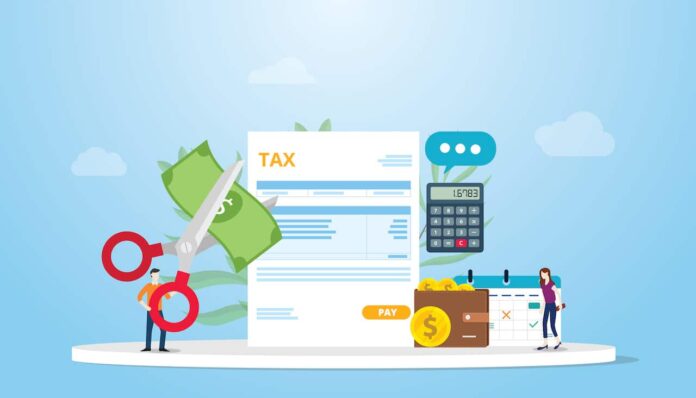Tax is as inevitable as death, they say. However, what if you could significantly trim your tax bill with proper planning?
Today, let’s journey through the complex maze of tax reduction strategies, simplifying them for anyone—from the regular earner to the multinational business owner—to understand and leverage.
Tax Planning Basics

Smart financial planning begins with understanding the basics of tax reduction strategies. Knowing your tax bracket and the rates associated with it is fundamental. Each bracket is assigned a different percentage of tax.
The higher your income, the greater the percentage you might pay. However, being in a high bracket doesn’t mean all your income is taxed at that rate. It’s a progressive system.
There are differences between standard and itemized deductions. The former is a flat deduction off your taxable income, while the latter lets you list eligible expenses. Picking the right one can lead to substantial savings.
Each year, it’s wise to calculate using both methods and opt for the one that offers the best result.
State taxes also play a role. Some states don’t charge income taxes, while others might levy significant amounts. Being aware of your state’s policies and planning accordingly can lead to substantial savings. If you’re considering moving, these costs might factor into your decision.
Leveraging Tax-Advantaged Accounts

Tax-advantaged accounts are gifts to taxpayers. Tools like Individual Retirement Accounts (IRAs) and 401(k)s allow you to save for retirement while reducing taxable income. The money you put into these accounts is often tax-deductible, which directly cuts down your liability.
Health Savings Accounts (HSAs) and Flexible Spending Accounts (FSAs) work similarly for medical expenses. They let you set aside pre-tax dollars for healthcare costs. By planning your medical expenses and using these accounts effectively, you can trim down your tax bill.
Lastly, don’t forget about education savings accounts. Tools like the 529 plan enable tax-free savings for educational expenses. While contributions aren’t federally tax-deductible, the growth and distributions for qualified expenses are.
Check out what Dean Vagnozzi says on 401k and the perfect retirement savings opportunity that works.
Deductions and Credits: Maximizing Savings

Tax deductions reduce taxable income. From student loan interest to certain business expenses, a multitude of deductions can be availed. It’s about knowing which ones fit your profile and claiming them.
Tax credits, unlike deductions, directly lower your bill. Popular credits include the Earned Income Tax Credit (EITC) and Child Tax Credit. By comprehending how these credits work and which ones you’re eligible for, you can significantly reduce your liability.
It’s essential to note that not all deductions and credits are available to everyone. Some have income restrictions or other qualification criteria. Keeping updated about these nuances ensures you utilize them optimally.
Investment Strategies for Tax Efficiency

Not all investments are taxed equally. Long-term investments, held for over a year, usually benefit from a lower capital gains tax rate than short-term ones. By considering the duration of your investment, you can optimize the outcome.
Dividend-paying stocks offer another avenue. Qualified dividends generally have favorable tax rates compared to regular income. Strategically choosing your investments with these dividends in mind can be beneficial.
Then there’s tax-loss harvesting. If you’ve had investments that haven’t performed well, consider selling them to offset the gains from other investments. This can significantly lower your capital gains tax.
Business Tax Planning

Entrepreneurs and business owners have unique opportunities. By selecting the appropriate business structure, whether an LLC, S-Corp, or other models, you can influence how you’re taxed.
Expenses play a pivotal role in business planning. By accurately tracking and claiming valid business expenses, from travel to office supplies, you can reduce your taxable business income.
Employee benefits and retirement plans shouldn’t be overlooked. Offering benefits such as health insurance or retirement contributions not only aids in employee retention but also provides tax deductions.
Estate and Inheritance Tax Strategies
Thinking about the future, especially posthumously, isn’t always comfortable. However, with the right planning, you can ensure your heirs benefit the most from your legacy. Gifting assets before death, for instance, can be a strategy to reduce estate taxes.
Trusts, whether revocable or irrevocable, offer a means to protect assets from estate taxes. By understanding the intricacies of each trust type, you can decide the best course for your assets.
Life insurance is another tool. Policies can be structured in ways that the death benefit remains tax-free for the beneficiaries, making it a strategic component in estate planning.
Tax Reduction for High-Income Earners

High earners face unique challenges, often landing in the highest brackets. Maxing out retirement account contributions is one method to reduce taxable income, bringing you possibly into a lower bracket.
Another approach involves tax-efficient investments. Municipal bonds, for example, offer interest that’s often exempt from federal taxes, presenting an attractive option for high-income individuals.
Finally, consider diversifying income sources. By ensuring not all your income is active (salary, wages), and some is passive (rental income, dividends), you might be able to benefit from different tax rates.
International Tax Considerations
Globalization offers both opportunities and complications. Earning income internationally can provide tax advantages, but it’s crucial to understand the treaties between countries. This ensures you aren’t doubly taxed.
Offshore accounts have garnered attention, both good and bad. While they can offer tax benefits, it’s essential to navigate this territory transparently and legally, understanding reporting obligations.
Finally, for those considering relocating, it’s vital to be aware of the tax implications, both in your current country and the destination. Some countries offer attractive incentives for new residents or retirees.
Compliance and Reporting: Staying on the Right Side of the Law

Abiding by the law is paramount. While tax reduction is a worthy goal, it must be pursued legally. This starts by ensuring you file your returns timely, even if you can’t pay the full amount owed.
Being audited is a concern for many. By maintaining organized records, regularly consulting with tax professionals, and staying updated on laws, you reduce the likelihood of running into problems.
If issues arise, address them head-on. Ignoring letters from agencies or delaying responses can exacerbate situations. Early engagement and transparency are crucial.
Final Thoughts
Taxation, while complex, offers numerous avenues for reduction with proper planning. By understanding your unique situation, leveraging available tools, and continually educating yourself, you can master the art of tax reduction.
Remember, it’s not about evading taxes, but about paying your fair share while optimizing your financial landscape.







